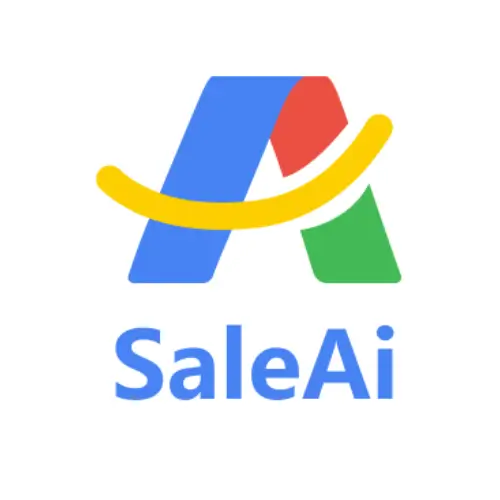
Sales technology used to mean tools —
CRMs for contact management, email platforms for outreach, analytics for reporting.
Each solved one problem but created another: fragmentation.
In the age of artificial intelligence, that model no longer works.
Modern organizations need connected intelligence, not isolated tools.
Enter the AI Sales Stack —
a unified ecosystem where data, automation, and decision intelligence flow seamlessly to drive smarter, faster, and scalable growth.
(According to Gartner Research, integrated AI sales ecosystems outperform standalone tools by 56% in efficiency.)
1️⃣ What Is the AI Sales Stack?
The AI Sales Stack is the modern sales infrastructure —
a collection of AI-driven components that work together like a living system.
It includes:
-
Data Intelligence: Collecting and interpreting information.
-
Automation Engines: Executing repetitive work efficiently.
-
Decision Systems: Turning data into strategy.
-
Feedback Loops: Learning from every interaction.
SaleAI combines these layers through its Agents —
specialized AI units that collaborate to form a single connected workflow.
(The OECD defines connected AI systems as “distributed models sharing adaptive intelligence across functions.”)
2️⃣ The Core Layers of an Intelligent Sales Ecosystem
A robust AI Sales Stack operates across four core layers:
| Layer | Description | SaleAI Components |
|---|---|---|
| 1. Data Intelligence Layer | Gathers and analyzes signals from web, trade, and social data. | InsightScan Agent, TradeReport Agent |
| 2. Automation Layer | Executes outreach and reporting at scale. | OutreachMail Agent, Email Marketing Agent |
| 3. Decision Intelligence Layer | Interprets outcomes and recommends next steps. | Super Agent, Company Insight Agent |
| 4. Optimization Layer | Continuously learns and refines the system. | Adaptive learning built into all Agents |
(A Forrester study shows that businesses adopting a multi-layer AI architecture report 2× faster sales cycle improvements.)
These layers work not as modules — but as a self-evolving network.
3️⃣ Connecting the Dots: From Data to Action
In traditional sales tech stacks, insights are trapped in silos.
The AI Sales Stack connects them.
When InsightScan detects new market activity,
the signal flows to OutreachMail, which adjusts messaging automatically.
Once responses are tracked, TradeReport updates the market dashboard,
and Super Agent synthesizes learnings for future strategy.
Every action informs the next — forming a closed-loop intelligence cycle.
(The World Trade Organization (WTO) reports that closed AI feedback systems increase operational agility by 50%.)
In SaleAI, nothing happens in isolation — everything is connected.
4️⃣ Adaptive Learning: Making the Stack Smarter Over Time
An AI Sales Stack isn’t static — it learns.
Each interaction adds context, improving how future tasks are performed.
When outreach tone affects engagement,
when timing changes conversion rates,
the system remembers — and adjusts.
This is adaptive automation at scale,
the same principle that powers continuous optimization across all SaleAI Agents.
(The OECD AI Index notes that adaptive intelligence boosts long-term system accuracy by 58%.)
The stack doesn’t just automate your work — it evolves with it.
5️⃣ Decision Intelligence: The Control Center of the Stack
At the top of the AI Sales Stack lies decision intelligence —
the layer that makes sense of everything below.
This layer connects predictive models, performance data, and business objectives
to recommend what should happen next.
For example:
“Shift outreach focus to Eastern Europe — import signals rising 14%.”
“Prioritize industrial parts — engagement trend +22% month-over-month.”
SaleAI integrates this intelligence through Super Agent,
turning analysis into strategy and strategy into execution.
(A Gartner analysis found that decision-intelligent sales stacks deliver 46% higher forecasting accuracy.)
6️⃣ Building Your Own AI Sales Stack
Creating a connected ecosystem doesn’t mean replacing all your tools —
it means connecting them under one intelligent layer.
Here’s how to start:
-
Audit your current sales workflow.
Identify disconnected tools or redundant data points. -
Add intelligence where it matters most.
Start with insight-driven Agents like InsightScan or TradeReport. -
Automate communication and reporting.
Deploy OutreachMail and Email Marketing Agents for repetitive tasks. -
Integrate adaptive feedback.
Use Super Agent to analyze and optimize outcomes.
(The Forrester framework on intelligent ecosystems recommends iterative adoption over system overhaul.)
You don’t build the AI Sales Stack in one day —
you grow it intelligently.
7️⃣ The Future of Connected Sales Systems
Tomorrow’s sales organizations won’t rely on isolated software.
They’ll operate on adaptive ecosystems — systems that learn, predict, and collaborate in real time.
SaleAI represents that shift:
a platform where every Agent, every workflow, and every dataset is connected,
driving continuous growth through intelligence.
It’s not about having more tools.
It’s about having a smarter system.
👉 Explore SaleAI: https://www.saleai.io
👉 Meet Super Agent: https://www.saleai.io/en/agent/super-agent


